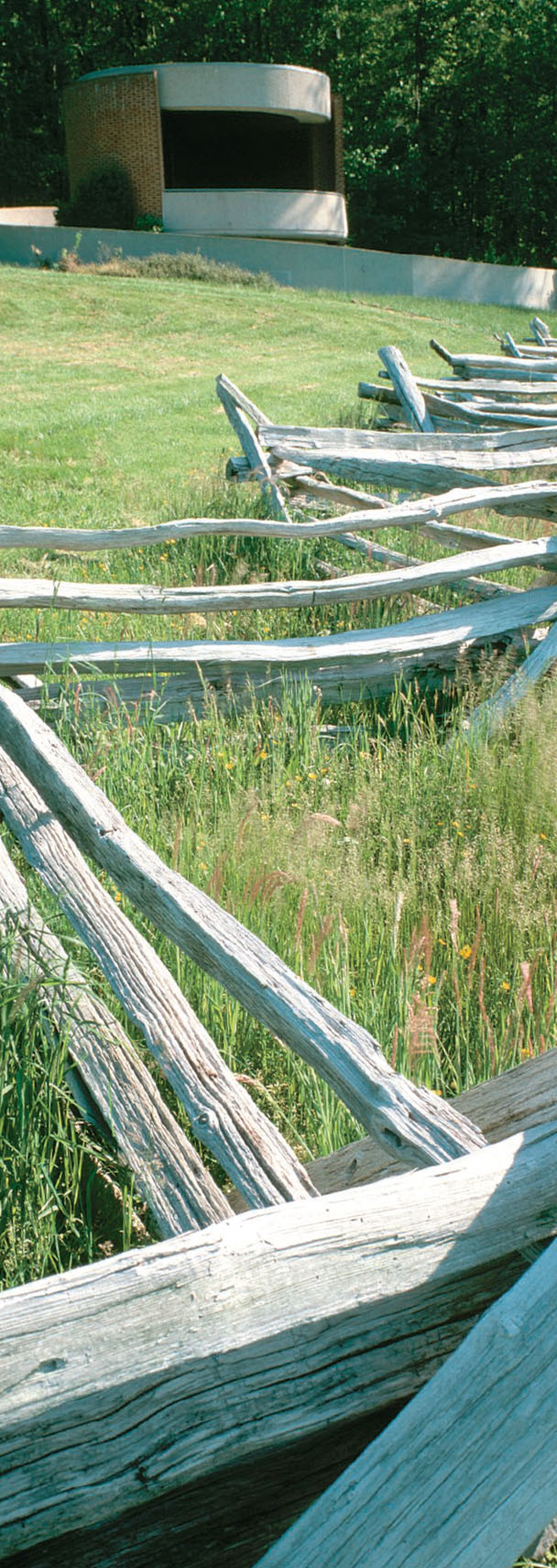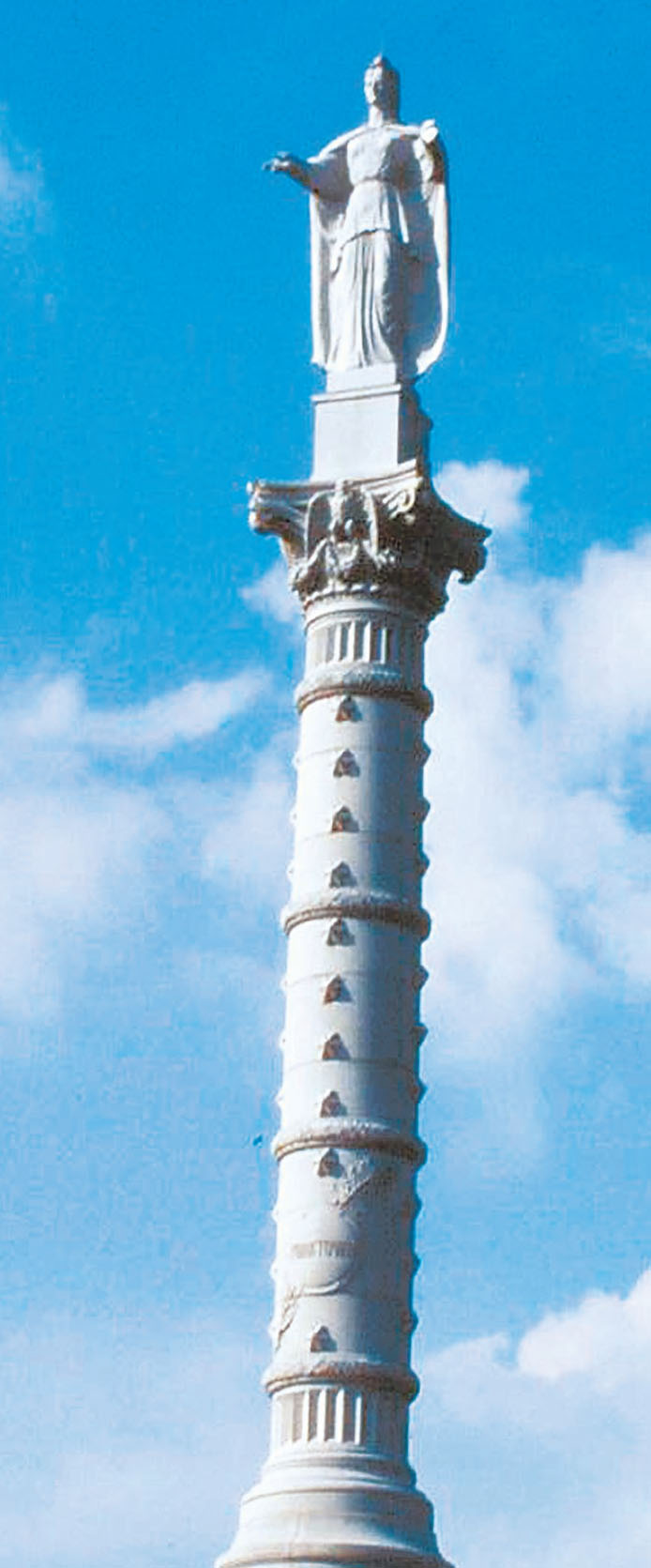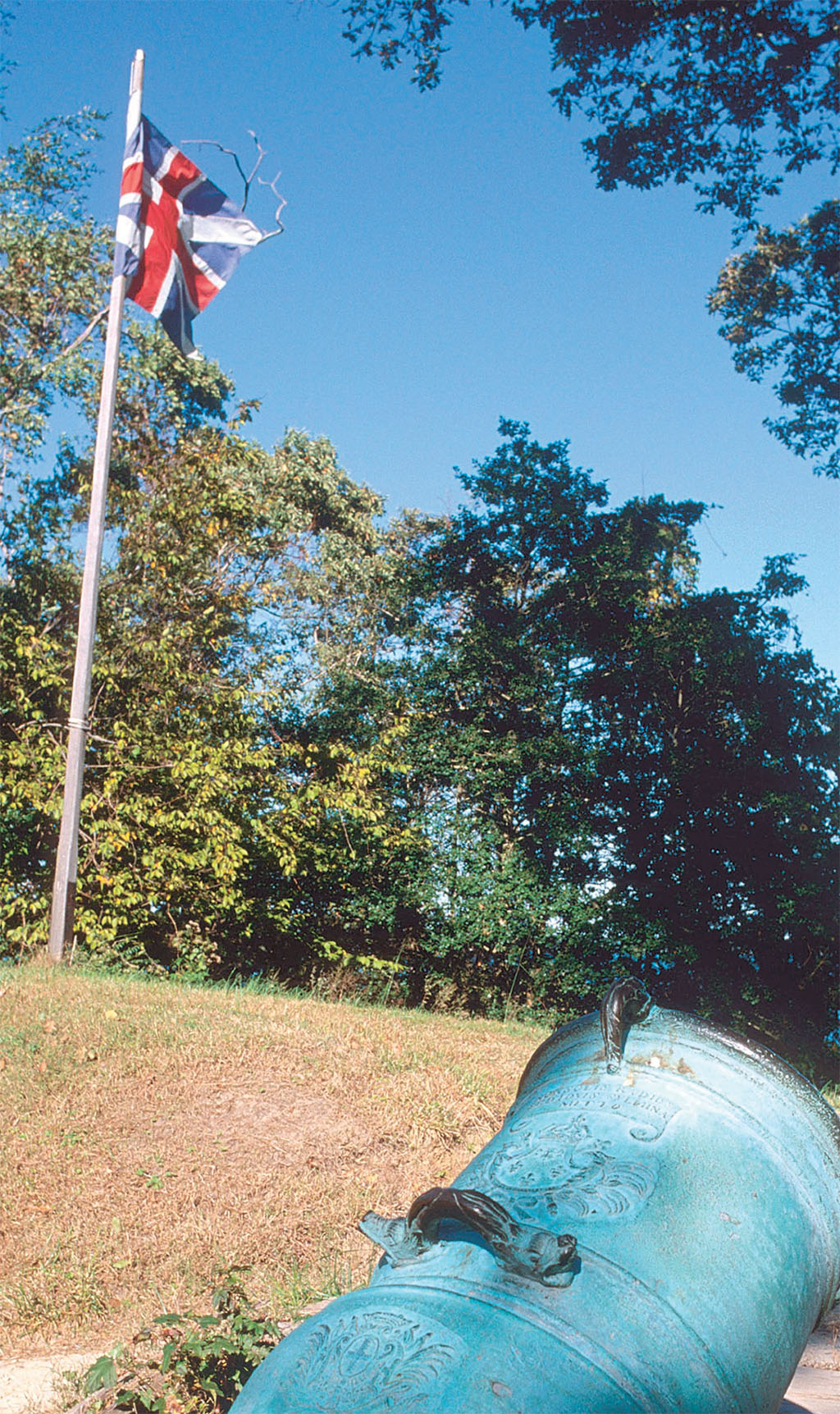
[caption id="TheWorldTurnedUpsideDown_Feature" align="aligncenter" width="960"]

ILLUSTRATION: MICHAEL FOOP; MAP: LIBRARY OF CONGRESS
YORKTOWN: BRITAIN’S LOSS OF THE COLONIES
AS HE STOOD AT ATTENTION with his Virginia militia unit on the afternoon of October 19, 1781, 17-year-old Samuel Clark probably viewed the surrender of 7,500 British and Hessian troops to the 16,000-man Franco-American army at Yorktown as “the vengeance of The Lord.” After all, General Charles Lord Cornwallis’ veteran army had spent the preceding six months laying waste to tidewater Virginia, and Clark had a sterling silver plate covering a hole in his skull—the result of a saber cut inflicted by Lieutenant Colonel Banastre Tarleton’s Loyalist cavalry during the Battle of Green Spring in early July—to prove it. Barely four months later, Tarleton’s infamous British Legion was being disarmed in nearby Gloucester, and Clark could smell the smoke rising from bombarded Yorktown and the stench of 400 horses that had been slaughtered by the British along the beaches of the York River. Truly, young Clark must have thought, such a miraculous victory could only reflect the will of God.
Clark’s superior officers knew that their victory had, in fact, depended upon the French fleet under Admiral François Joseph Paul, comte de Grasse, to prevent Lord Cornwallis’ evacuation or reinforcement by the Royal Navy, and the troops and heavy artillery of General Jean Baptiste Donatien de Vimeur, comte de Rochambeau, to drive home the brief siege. Although the Americans had outwitted the British high command to achieve this rare tactical “checkmate,” they also knew how lucky they had been. Had they been interviewed privately, George Washington and his senior commanders would probably have admitted that their Yorktown triumph was (as Wellington was later to describe his hair breadth victory over Napoleon at Waterloo) “just about the nearest thing you ever saw.” But why had Britain’s experienced military leaders failed to prevent such a disaster, and how did British observers at the time view what turned out to be the most important single event in the American War of Independence?
As Cornwallis’ dazed and dejected veterans marched out of the ruins of Yorktown, their band struck up a popular tune called “The World Turned Upside Down.” This ironic title may have reflected the views of Cornwallis and his superior in New York, General Sir Henry Clinton, to whom the Yorktown debacle must have seemed both embarrassing and inconceivable. To these veteran British commanders, such a disaster could only have been produced by an extraordinary streak of bad luck. In fact, misfortune was but one of many factors that ultimately produced the “miracle” of America’s Yorktown victory.
From the outset, the British had viewed the “American Rebellion” as an international conflict to be played out within the broader context of England’s global security concerns. Pursuing more limited objectives (independence and full national sovereignty) with limited resources, American leaders did not “internationalize” their struggle until 1778, when treaties of assistance were finally negotiated with France and Spain. By the autumn of 1781, both the British and American strategic contexts were defined by what had become a “world war” between Britain and its European enemies.
The foremost of these was France, which in addition to providing troops and materiel to the Americans, maintained (in the West Indies) the only naval fleet in the Western Hemisphere capable of successfully deterring or defeating major elements of the Royal Navy. Lacking such a naval force, the Continental Army had never been able to mount the coordinated “sea-land operations” routinely carried out by the British. By 1781, however, Washington had devised a plan to “borrow” the French West Indies squadron to beat the British at their own game.
In 1781 the 35,000 British troops in North America were on the defensive, with some 10,000 protecting Clinton’s headquarters in New York City, about 6,000 garrisoning Charleston and Savannah, and the rest thinly dispersed from Florida to Canada. Only Cornwallis’ 4,500-man army remained active as an expeditionary force, and it had become bogged down in Virginia.
Informed by his spies of the continuing weaknesses of the Continental Army, Clinton believed that a political settlement of the war was still possible, if he could prevent another Saratoga-like military disaster. Such fears made him an easy mark for Washington’s deception campaign threatening a sudden strike against New York, while in fact the allies were massing troops to march south to trap Cornwallis in Yorktown. Indeed, Washington’s ploy was so successful that by mid September, some newspapers in London were predicting that “a fatal battle would commence shortly in New York.”
Cornwallis had invaded Virginia (essentially on his own initiative) in May 1781 in an effort to stanch the flow of men and materiel to “Rebel” forces in the Carolinas. While his regular troops and Tarleton’s dragoons had captured war supplies and occupied Williamsburg, they had been unable to destroy the 1,500 troops under marquis de Lafayette, and General “Mad” Anthony Wayne who had been shadowing the Redcoats.
In July Cornwallis was ordered by General Clinton to establish a coastal base in Virginia from which the Royal Navy could embark 2,000 of Cornwallis’ men to help defend New York. Discovering that Portsmouth and Old Point Comfort were unsuitable, Cornwallis decided in early August to fortify Yorktown and Gloucester Point opposite each other on the deep-channeled York River.
Cornwallis moved his army to Yorktown and began to fortify the hamlet in case he needed to fend off Lafayette’s small force before the arrival of a powerful Royal Navy squadron promised by General Clinton. Assuming that his garrison could count upon artillery support from British warships cruising the York, Cornwallis built relatively light defenses around Yorktown. Moreover, because he expected to be evacuated within a few weeks, he did not attempt to engage Lafayette’s army in a preemptive battle.
‘THE WHOLE PENINSULA TREMBLE S UNDER THE INCESSANT THUNDERINGS OF OUR INFERNAL MACHINES.’
[caption id="TheWorldTurnedUpsideDown_img1" align="aligncenter" width="864"]

The Granger Collection, New York
[caption id="TheWorldTurnedUpsideDown_img2" align="aligncenter" width="608"]

©David R. Frazier Photo Library
[caption id="TheWorldTurnedUpsideDown_img3" align="aligncenter" width="694"]

Inc./Alamy; Dana Huntley
What neither Clinton nor Cornwallis knew until it was too late was that by early September Washington and his French allies had begun to move some 12,000 troops south from their bases in New York and Rhode Island. Moreover, by early October the French West Indies Fleet under Admiral de Grasse had blockaded Chesapeake Bay, and another French fleet had delivered an additional 3,000 French troops and a cargo of 60 pieces of heavy siege artillery to ports on the James River.
Once Washington’s forces had fully arrived, they converged upon Yorktown and in late September began to conduct a classic European-style siege, forcing the British to retreat to a smaller defensive perimeter. On October 5, the British and French fleets met off the Virginia capes in a limited but highly destructive engagement that caused the Royal Navy’s squadron under Admiral Thomas Graves to return immediately to New York for repairs.
[caption id="TheWorldTurnedUpsideDown_img4" align="aligncenter" width="1024"]

©David Muench/Corbis
[caption id="TheWorldTurnedUpsideDown_img5" align="aligncenter" width="353"]

The Granger Collection, New York
Four days later, the allied artillery batteries (ultimately some 100 guns) opened fire on the British lines, delivering an estimated 3,600 shells on the first day. One eyewitness recorded in his diary that “The whole peninsula trembles under the incessant thunderings of our infernal machines.” The intense allied bombardment quickly silenced the guns within the British garrison, and for the next nine days its defenders lived a hellish existence. In addition, allied gunners used red-hot can-non balls to set fire to half a dozen British ships in the York River, including the 44-gun Charon and the 28-gun Guadalupe.
In his bunker within Yorktown’s shrinking defensive perimeter, Cornwallis began to doubt that his troops could hold out long enough to be rescued by the troops and ships of a second relief mission Clinton had promised to send from New York. On October 15, Cornwallis sent a note to Clinton advising against any relief attempt. The following night an attempted evacuation of troops by boat to Gloucester was foiled by a thunderstorm, and a gun-spiking sortie against two allied batteries proved futile.
Resigned to his fate, on the morning of October 17 Cornwallis ordered a drummer to beat a parley, and negotiations with Washington concerning the terms of surrender began. On the day following the surrender ceremony, Cornwallis sent a dispatch to Clinton summarizing the siege and concluding that “Under all these circumstances, I thought it would have been wanton and inhuman to the last degree to sacrifice the lives of this small body of gallant soldiers….I therefore proposed to capitulate.”
Five days after the surrender ceremony, Clinton’s relief expedition—36 ships and 7,000 men—which had set sail from New York two weeks later than planned due to Royal Navy repair requirements, arrived off the Virginia capes. Initially refusing to believe the testimony of escapees from Yorktown, a few days later the flotilla returned to New York after receiving false reports of a 45-ship allied naval force massing in Hampton Roads. Clearly, Royal Navy leaders were unwilling to risk a “Yorktown” of their own at this point in the campaign.
‘ I THOUGHT IT WOULD HAVE BEEN WANTON AND INHUMAN TO THE LAST DEGREE TO SACRIFICE THE LIVES OF THIS SMALL BODY OF GALLANT SOLDIERS.’
In retrospect, Yorktown’s outcome was determined by weaknesses that had plagued the British army’s post-1780 southern campaign for some time: caution and vacillation on the part of General Clinton in New York, independence bordering on insubordination on the part of Cornwallis in the field, the lack of a unified command to coordinate land and naval forces, a dangerously slow command-and-control system (some messages took two weeks to travel between Virginia and New York) and Clinton’s tendency to ignore unwelcome intelligence information. By far the factor of greatest importance, however, was the mind-set of the two senior British army commanders. Complacent in their underestimation of their American opponents, and accustomed to the Royal Navy’s supremacy in North American waters, both were psychologically unprepared to deal effectively with new, rapidly evolving military threats.
[caption id="TheWorldTurnedUpsideDown_img6" align="aligncenter" width="795"]

© Richard T. Nowitz/Corbis
For Cornwallis and the senior British officers on his staff, Yorktown was just another battle in a long campaign—an unfortunate outcome of the fortunes of war. Few of them understood the political changes taking place at that time in London, where the press and the public were beginning to undermine the government coalition supporting a military solution to the rebellion in North America. As a result, when they boarded the ships that would take them back to New York and London they had no idea that they had just witnessed the beginning of the end of British rule in the 13 American colonies. The surrender of the British garrison at Yorktown would lead to the creation of a fully independent nation 174 years after the founding of the first permanent English settlement at nearby Jamestown Island in 1607.
News of the debacle at Yorktown reached London by November 25, to the dismay of Lords Frederick North and George Germain and the stubborn denial of George III. The War Government’s fate was sealed by the opposition’s victory in elections four months later. Although minor hostilities continued in isolated areas of North America during the next two years, by November 1783 the Treaty of Paris ending the war had been signed, and the last British troops and their Loyalist supporters had been evacuated from Savannah, Charleston and New York.
The British people were at first reluctant to blame their military leaders in North America for the capitulation at Yorktown, but as the full ramifications of the defeat became apparent, the press and the public began to look for scapegoats. Some blamed the Royal Navy, mocking the old boast that “wherever an English soldier saw the sea he was safe.” Both Clinton and Cornwallis wrote books and articles defending their actions, and heated recriminations continued between the two men for two decades. Clinton seems to have lost this battle for public support, and died in 1795 while serving as governor of Gibraltar. Cornwallis went on to serve as governor-general in both India (twice) and Ireland, dying in 1805. The notorious Colonel Tarleton returned to a hero’s welcome, served in Parliament and helped promote the new sport of cricket. He eventually fell out with Cornwallis over the Yorktown issue, but befriended the marquis de Lafayette and took up his cause in Parliament when his former enemy was destitute following the French Revolution.
Thirty years after their defeat at Yorktown, British military leaders would mount another series of largescale sea-land operations against England’s former colonists. During the War of 1812, Samuel Clark once again volunteered to fight the British, this time as a major in command of the Virginia militia. Although a British expeditionary force supported by the Royal Navy succeeded in burning Washington, D.C., in August 1814, a similar combined arms operation against New Orleans ended in disaster five months later, and the British again failed to achieve a strategic victory in the conflict. Perhaps they would have done well to heed the wisdom of one of Rochambeau’s aides-de-camp, who in the wake of the Yorktown surrender observed that “No opinion was clearer than that, while the American people might well be conquered by welldisciplined European troops, the country of America was unconquerable.”
[caption id="TheWorldTurnedUpsideDown_img7" align="aligncenter" width="1024"]

Library of Congress





Comments